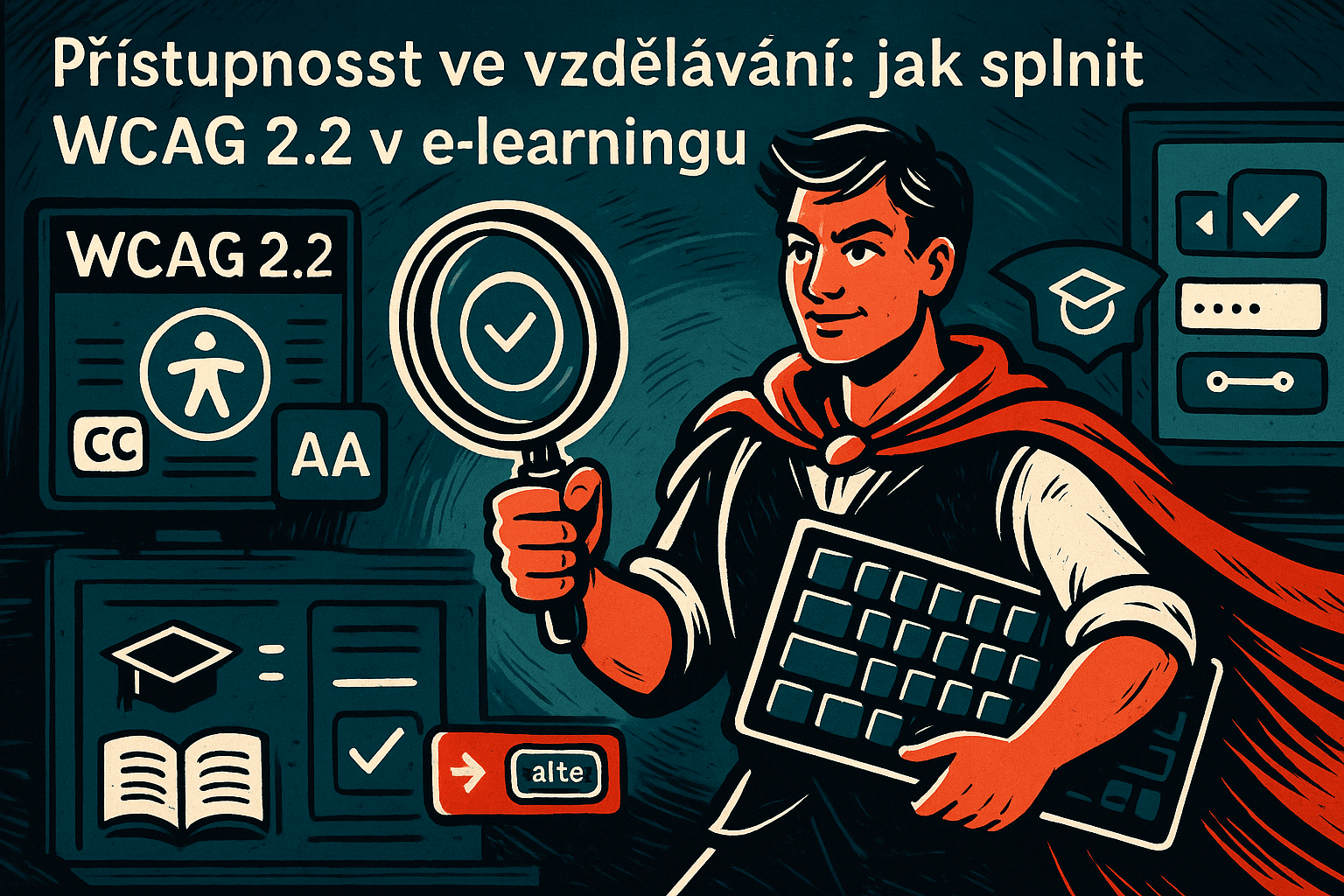Open standards in e-learning: Why invest in interoperability
(or how to avoid a closed ecosystem and gain flexibility for the future)
In the world of corporate training, it has long been no longer true that you can just upload one course and let employees get on the computer. E-learning is an increasingly broader discipline: courses, webinars, mobile apps, virtual reality and many other forms of learning. That's why interoperability and open standards are coming to the fore, allowing all these pieces to fit together and work across different platforms. In this article, we'll look at what open standards actually mean in e-learning and why it's worth it for companies to invest in them.
What does "open standards" mean in e-learning
Open standards are agreed formats and specifications that allow different systems (LMS, authoring tools, analytics tools, mobile apps) to work together and exchange data. Instead of each vendor using its own proprietary format that is locked into its platform only, an open standard gives clear rules on how to structure and communicate information.
So in e-learning, you may come across terms like SCORM, xAPI (formerly Tin Can API), LTI (Learning Tools Interoperability), AICC, etc. Each focuses on a slightly different area, but the main idea is to ensure that content or data from one tool can work in the other tool.
Why is interoperability so important
1. Flexibility and future growth
Today's needs can change rapidly. You may require "just" an online course with a test now, but what if a year from now you expand your learning to mobile microlearning, VR simulations, or gamified exercises? If you have open standards, you can add a new tool or learning module to your existing LMS. Without interoperable interfaces, you could be "trapped" in the old ecosystem, using only native functionality.
2. Content cost savings
When you get courses in SCORM or xAPI format, you are not tied to a single LMS (or a single vendor) - you can transfer them between systems, update them, combine them. This avoids the one-time costs of producing and modifying courses in a proprietary format that you won't use elsewhere.
3. The ability to combine the best tools
Some platforms excel at testing, others at simulations, still others at social learning. If they all have open architectures and support standard protocols, you can create an ecosystem of the best tools that can communicate with each other.
4. Easier analytics and reporting
Forms such as SCORM provide basic reporting data, while xAPI allows you to track much more detailed data about what the user actually did (how much time they spent studying, what stage they got stuck in, what interactions engaged them). Plus, with the appropriate standard, you can easily export or link the data to the Learning Record Store (LRS) for deeper analysis.
Main open standards you should know
SCORM (Sharable Content Object Reference Model)
- A classic format that addresses course portability and basic tracking (completion, final score).
- Works in a browser, but has some limitations (web-only environment, limited data to transfer to LMS).
xAPI (Experience API)
- A newer standard, formerly called Tin Can API.
- Not browser-bound, allows offline and mobile activities, VR, simulations, etc.
- Data is stored in the LRS (Learning Record Store) and can be analyzed in detail.
LTI (Learning Tools Interoperability)
- A standard that helps link different learning tools (e.g. external testing tool, webinar platform) with your LMS.
- Users can log into additional applications without a separate login, and results are written back to the LMS.
AICC
- An older standard originally developed for the aerospace industry.
- You will sometimes see it in older systems, but today SCORM or xAPI is preferred.
Examples of practical use
- Integrating a mobile app into the LMS: If you use a mobile app that generates records of what the user has studied offline, xAPI can send them to the LRS so the LMS knows that the student has completed 80% of the assignments outside the office.
- Transfer of finished courses between LMSs: You buy SCORM courses from vendor A, but after a few years you switch to another LMS - you take the courses with you without any problems.
- Webinar Platform Connectivity: With LTI, you can connect a virtual classroom or interactive testing tool so that users don't have to register separately and the results are dumped directly into a central report.
How to decide which standards to use
- SCORM: If you are happy with basic tracking, this is still the most functional and widely used solution. If you are just planning to jump on the online education bandwagon and are looking for a suitable learning system, SCORM support is a must.
- xAPI: If you want more detailed data on what people are specifically doing and how, plus the ability to track learning outside of standard web courses (mobile, VR, offline activities).
- LTI: Useful if you have multiple different tools and need a seamless "single sign-on" integration and easy return of results back to the LMS.
Often, companies start with SCORM and gradually, as their needs grow, deploy xAPI and LTI as well.
Open standards in e-learning are a surety that you won't be stuck in one closed ecosystem that doesn't evolve the way you need it to. Investing in compatible courses and tools pays off because you get greater flexibility to expand and renew your learning environment. Likewise, it opens the door to advanced analytics and personalization, which can dramatically increase the effectiveness of your entire corporate learning experience.
So before choosing a particular platform or course provider, ask what standards they support and to what extent. If you're not sure where what's offered, check out our LMS comparison - you'll find information on support for SCORM, xAPI, LTI and other standards that can help you make a truly long-term strategy-focused decision.







